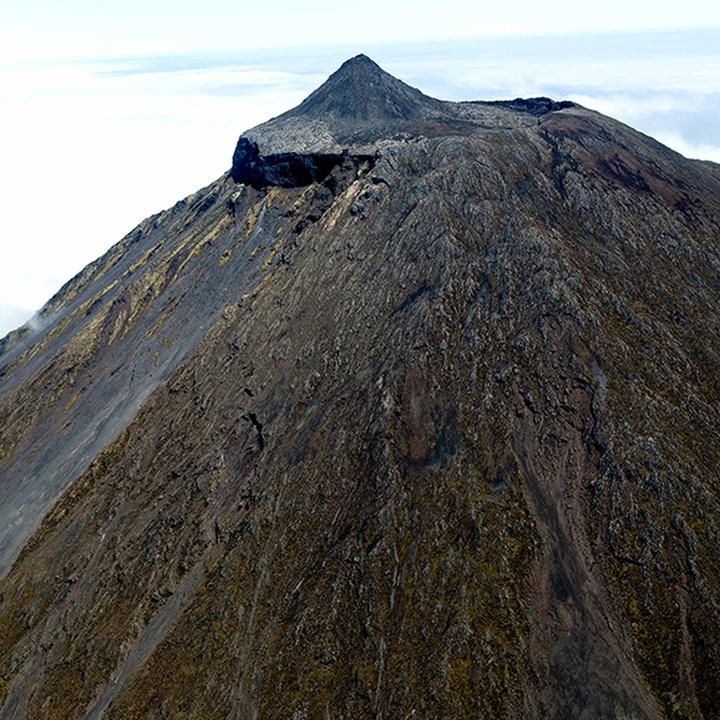Text size:
Montanha do Pico
How to get there
Leaving from the church of Madalena and going southwest towards the building of the Post Office (CTT), go about 1 kilometre until you reach a junction where you must turn left following the signs indicating "Montanha” (Mountain). Follow this road for about 12 kilometres, and you will find, on the right, a secondary road that you must follow. Without making any detour for about 5 kilometres until you find on the right a stone building, the Mountain’s House.
Recommended gear
Appropriate footwear for walking, coat, waterproof jacket, hat, sunscreen, water, energy food, sun glasses, beanie, gloves, hiking poles. In case of staying overnight: tent, sleeping bag, flashlight, warm clothes.


Gallery
Pico Mountain is the highest point in Portugal, with 2351 metres of altitude, and is classified as a Nature Reserve. The trail begins and ends at the Mountain’s House, at an altitude of 1230 metres.
According to the Access Regulation to Pico Mountain, you can perform this trail in two ways: autonomously or through a service provided by tourist entertainment companies, travel agencies or proprietary or operating companies of tourist enterprises, with a guide.
For authorization to do the trail, you should go to the Mountain’s House, Pico Nature Park Headquarters, Madalena Fire Department Headquarters or make your reservation on the Pico Mountain’s climb platform.
During this walk, you can see the Furna Abrigo, a welded scoria cone composed of a pit about 40 metres deep and a gallery that served as a shelter for hikers who ventured on the mountain, as well as natural habitat where the main species are Calluna vulgaris, Thymus caespititius and Daboecia azorica.
As you advance on the way up, the vegetation begins to appear scarcer, dispersed and in smaller dimensions, as only a few species can survive the harsh climate on top of the mountain. It should be noted the Silene uniflora subps. cratericola, an endemic subspecies that exists only in the crater of Pico Mountain.
The various geological formations that can be observed along the climbing are of great importance. At 2050 metres of altitude, you can see a fossil crater and, on the top, a pit crater, the Piquinho cone, with its driblet lavas, and an eruptive fissure, with lava scoria in its surroundings.
See the Access Regulation to the Pico Mountain Nature Reserve here.
See the Code of Conduct in Pico Mountain here.


